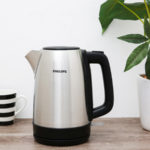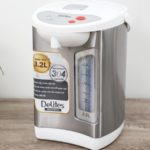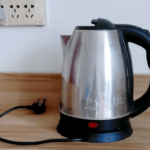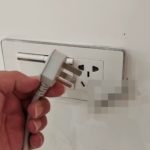The electric kettle is a familiar item to the people of Vietnam, especially those in rural areas. However, not everyone knows how to use an electric kettle effectively and for a long time, even though there are some simple principles that many people are not aware of.

As the cold season arrives, the demand for hot water kettles increases. Therefore, Tintuconline invites you to explore the principles and tips for using kettles to achieve the best, most durable, and safe results, avoiding any potential regrets.
Clean the newly purchased kettle before use
When you buy a new kettle, you should not use it immediately but clean it before storing hot water. Specifically, to clean the interior of the kettle, use a little dishwashing liquid and a soft cloth to remove dirt. Then rinse several times with warm water to completely remove the soap. When cleaning the kettle, pay attention not to use sharp objects as they can damage the heat-insulating layer.
For the exterior of the kettle, use a soft cloth soaked in soapy water to gently wipe clean. When cleaning the lid of the kettle, pay attention to clean the gasket and the gaps, as these are the areas most prone to dirt. Before use, you can pour warm water or use vinegar to soak the kettle overnight to remove the odor of a new kettle.
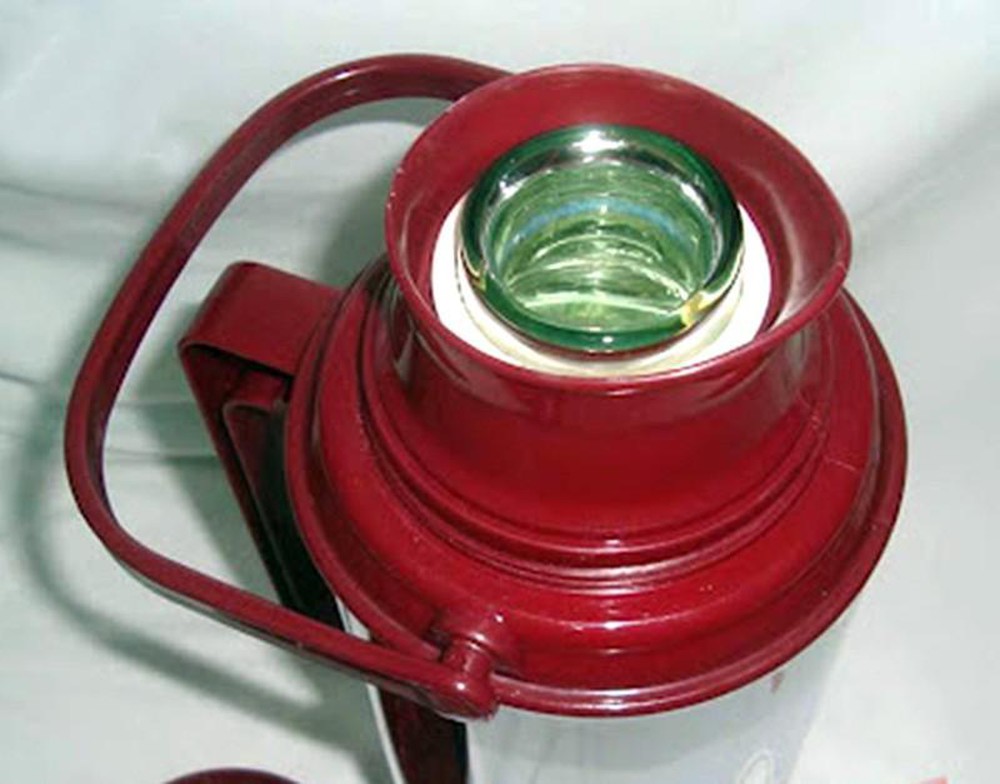
How to use the kettle for the first time
After cleaning, the first time you use the kettle to store hot water, you should pour a small amount and then close the lid. If you pour boiling water abruptly into the kettle, it can cause a thermal shock and damage the inner layer. After about 2-3 minutes, open the kettle and pour more hot water. Stop pouring when the kettle is nearly full, and tighten the lid to prevent heat loss and rapid cooling. In the process of using the kettle, in the morning, empty the old water before pouring in new hot water.
To keep the water hot longer, do not fill the kettle completely
This is why experts advise leaving some space between the boiling water and the kettle lid. The purpose is to insulate the hot water and keep it longer because the thermal conductivity of water is about 4 times higher than that of air. Therefore, if the kettle is filled to the brim, the heat will easily transfer to the surrounding air. Leaving an air gap will slow down the heat transfer.
Avoid placing the kettle near major heat sources
Doing this is to avoid the risk of explosion or damage to the kettle. For example, if you place the kettle near a gas stove, the outer shell of the kettle, mainly made of plastic, is highly susceptible to heat and deforms easily.
Moreover, if placed near a strong heat source, the kettle can be stimulated to the point of dangerous explosions. The reason is that both the inner and outer thermal layers are hot, which is an overload for regular kettles.
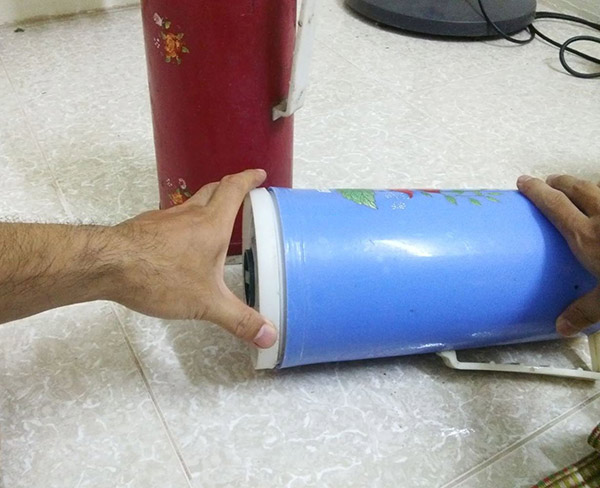
Avoid strong impact, shaking, or rough handling
This principle is important for protecting and safely using the kettle. Although the kettle has 2-3 layers including the outer shell, intermediate layer, and kettle core, the kettle core, made of 2 layers of silver-plated glass to reflect thermal radiation and keep the water hot, is fragile.
Therefore, if a strong impact occurs, the kettle can break or even be dangerous if the kettle core is ejected. Therefore, to ensure the kettle’s durability, avoid any impacts, strong shaking, or moving the kettle without protection.
Always keep the kettle out of reach of children
Many families have a habit of placing the kettle under the table or beside it, which is not recommended at all. This is very dangerous because if it is within the reach of a child, they can open it and spill the water at any time. If it is placed higher but still within the child’s reach, it is even more dangerous because children with spilled water can cause full-body burns.
For families with young children, this principle is extremely important for the safety of the children as they are always curious and like to explore. Household items within their reach can be touched at any time.
Choose a kettle with a secure lid
Some types of kettles only have lids that fit tightly rather than twist, so if accidentally knocked over, hot water can spill out immediately, which is very likely to cause burns. Therefore, for added safety, you should choose a kettle with a tightly twisting lid and an outer protective cap.
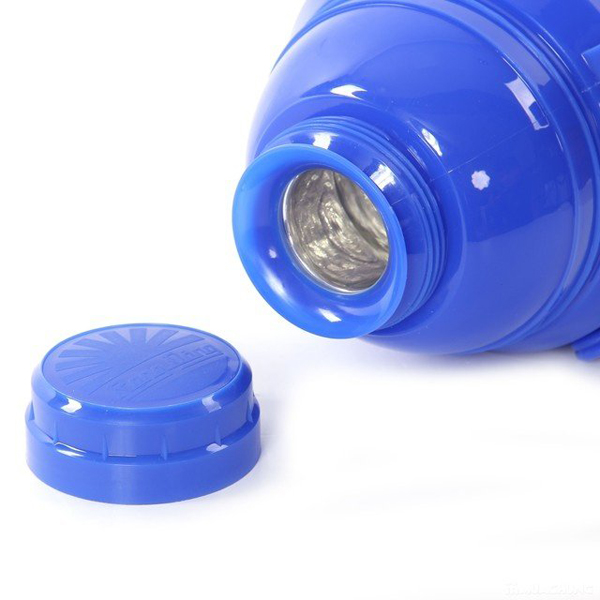
In addition, you should also design a secure stand for the kettle (whether purchased or homemade). If there is an accidental collision, the stand will keep the kettle from tipping over, preventing spills.
Detect cracked or broken kettle timely
Today’s kettles are designed to be very robust, so sometimes a cracked or broken kettle core does not necessarily mean that water will leak out, and you may not notice it. However, if the kettle core is cracked or broken, it can come into contact with the silver-plated layer on the outside of the kettle, affecting the purity of the water, which is not good for the user’s health.
The tip to identify a cracked kettle core is that the outer shell of the kettle suddenly becomes hot, the water cools very quickly, and when pouring the water, you may see silver flakes mixed in the water. When this happens, observe, and if you find any cracks in the kettle core, replace it immediately.
Safely clean the kettle core
Cleaning the exterior of the kettle is relatively easy, but cleaning the long-term dirt in the kettle core is more complex, and not everyone knows how to do it. One method is to pour hot vinegar into the kettle, tightly close the lid, shake gently, and soak for about 30 minutes to 1 hour. The vinegar will dissolve the deposits inside the kettle. Then pour out the vinegar, and the precipitated dirt and deposits will come out with it. Finally, rinse with hot water to clean.
Source: V.K – Vietnamnet
Maximizing Durability and Energy Efficiency with High-Speed Kettles: Tips and Advice
Are you an electric kettle aficionado? If so, you’ll appreciate Ði?n máy Xanh’s latest offering. We’ve compiled comprehensive instructions to help you make the most of your electric kettle, including tips on how to prolong its life as well as maximize energy savings. Let’s get your kettle expertise up to date!
How to Pour Hot Water from an Electric Kettle Safely and Effectively
Nowadays, electric kettles are a must-have household appliance. From quickly boiling water for coffee and tea to keeping hot water warm for convenience, electric kettles are a great addition to any kitchen. With Điện máy XANH, explore the different types of electric kettles available and learn more about how to best use them.

























